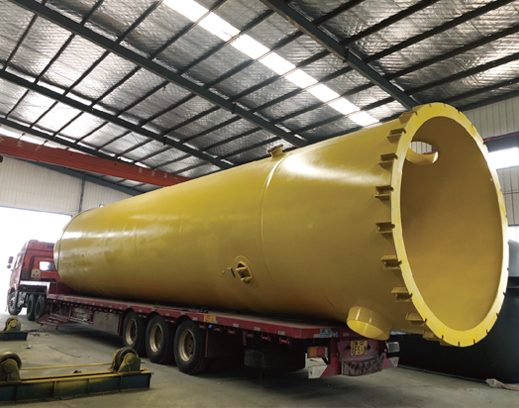Qingdao Haikong Pressure Vessel Co., Ltd. specializes in customizing non-standard pressure vessels, and undertakes the design and manufacture of various ASME, PED, A2 and D pressure vessels according to user requirements. Our senior technical engineers are responsible for the design, process, materials, welding, flaw detection, inspection, physical and chemical functions in the quality assurance system, and can produce a series of pressure vessels of more than 200 specifications from 0.1m3-100m3. Large well-known brand compressors and oxygen generators.

Design and manufacture of various ASME, PED, A2 and D pressure vessels according to user requirements
Design and manufacture of various ASME, PED, A2 and D pressure vessels according to user requirements
Check for pressure vessels
(1) External inspection of pressure vessels
also known as in-service inspection, the main contents of the inspection are: cracks on the outer surface of the pressure vessel, deformation, leakage, local overheating and other abnormal phenomena; Whether the safety accessories are complete, sensitive and reliable; whether the fastening bolts are intact and all tightened; whether the foundation has any sinking, tilting or damage to the anti-corrosion layer. The external inspection is both the work of the inspector and the daily inspection of the operator. It is found that the safety phenomenon (such as cracks, deformation, severe leakage, etc. of the pressure component) should be stopped and reported to the relevant personnel in time. & Nbsp; & nbsp; & nbsp; & nbsp; & nbsp; & nbsp; & nbsp; & nbsp; & nbsp; & nbsp; & nbsp; & nbsp; & nbsp; & nbsp; & nbsp; & nbsp; & nbsp; & nbsp; & nbsp; & nbsp; & nbsp; & nbsp; & nbsp; (ii) Pressure Internal and external inspection of containers
Inspection of the inside and outside of the pressure vessel This inspection must be carried out after the parking and the inside of the container have been cleaned. The main contents of the inspection include, in addition to the entire contents of the external inspection, the corrosion of the inner and outer surfaces; the naked eye and the magnifying glass: check all welds, head transition areas and other stress concentration parts for cracks, if necessary, Ultrasonic or radiographic inspection checks the internal quality of the weld; measures the wall thickness. If the measured wall thickness is less than the minimum wall thickness of the container, the strength check should be re-examined, and the pressure-reducing use or repair measures should be proposed; for the container that may cause the metallographic structure change of the metal material, metallographic examination should be carried out if necessary; The main bolts of ultra-high pressure vessels should be made of magnetic powder or colored
Check for cracks in the pressure vessel row. Through internal and external inspections, the defects should be analyzed and the treatment opinions submitted. A retest is required after repair. The internal and external inspection cycle of the pressure vessel is once every three years, but the inspection period of the vessel for strongly corrosive media and highly toxic media should be shortened. Containers with serious defects during operation and containers with poor welding quality and materials whose material resistance to corrosion is not known should also be shortened. & Nbsp; & nbsp; & nbsp; & nbsp; & nbsp; & nbsp; & nbsp; & nbsp; & nbsp; & nbsp; & nbsp; & nbsp; & nbsp; & nbsp; & nbsp; & nbsp; & nbsp; & nbsp; & nbsp; & nbsp; & nbsp; & nbsp; & nbsp; & nbsp; & nbsp; & nbsp; & nbsp; & nbsp; & nbsp; & nbsp; & nbsp; & nbsp; & nbsp; & nbsp; & nbsp; & nbsp; & nbsp; & nbsp; & nbsp; & nbsp; & nbsp; & nbsp; & nbsp; & nbsp; & nbsp; & nbsp; & nbsp; & nbsp; & nbsp; & nbsp; (3) Comprehensive inspection of pressure vessels
Comprehensive inspection of pressure vessels In addition to the above-mentioned inspection items, a pressure test (generally hydrostatic test) is also carried out. Non-destructive testing of all major welds or full weld inspection. However, for containers with low pressure, non-flammable or non-toxic, non-corrosive media, if no defects are found, after obtaining certain experience, non-destructive testing may be performed. The full inspection cycle of the container is generally performed at least once every six years. For qualified containers filled with air and inert gas, the full inspection cycle may be extended after obtaining experience and one or two internal and external inspections to confirm that there is no corrosion.
